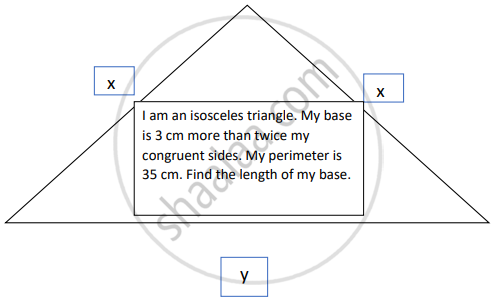Advertisements
Advertisements
Question
Solve the following simultaneous equation.
2x - y = 5 ; 3x + 2y = 11
Solution
2x - y = 5 ...(I)
3x + 2y = 11 ...(II)
Multiplying (I) with 2 we get
4x - 2y = 10 ...(III)
Adding (II) with (III)
3x + 2y = 11
+ 4x - 2y = 10
7x = 21
⇒ x = 3
Putting the value of x in (I) we get
∴ 2x - y = 5
⇒ 2 × 3 - y = 5
⇒ 6 - y = 5
⇒ y = 1
APPEARS IN
RELATED QUESTIONS
Solve the following system of linear equations :
2(ax – by) + (a + 4b) = 0
2(bx + ay) + (b – 4a) = 0
Form the pair of linear equation in the following problem, and find its solution (if they exist) by the elimination method:
A lending library has a fixed charge for the first three days and an additional charge for each day thereafter. Saritha paid Rs 27 for a book kept for seven days, while Susy paid Rs 21 for the book she kept for five days. Find the fixed charge and the charge for each extra day.
A fraction becomes `(1)/(3)` when 2 is subtracted from the numerator and it becomes `(1)/(2)` when 1 is subtracted from the denominator. Find the fraction.
The difference between an angle and its complement is 10° find measure of the larger angle.
Complete the activity.

Difference between two numbers is 3. The sum of three times the bigger number and two times the smaller number is 19. Then find the numbers
The solution of the equation ax + by + 5 = 0 and bx − ay − 12 = 0 is (2, – 3). Find the values of a and b
The angles of a cyclic quadrilateral ABCD are ∠A = (6x + 10)°, ∠B = (5x)°, ∠C = (x + y)°, ∠D = (3y – 10)°. Find x and y, and hence the values of the four angles.
Evaluate: (1004)3
A 2-digit number is such that the product of its digits is 24. If 18 is subtracted from the number, the digits interchange their places. Find the number.
